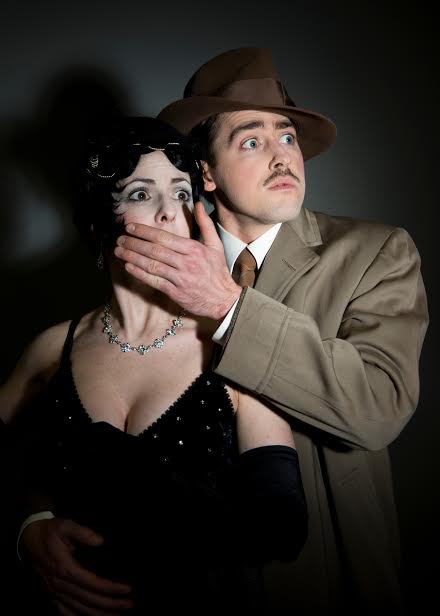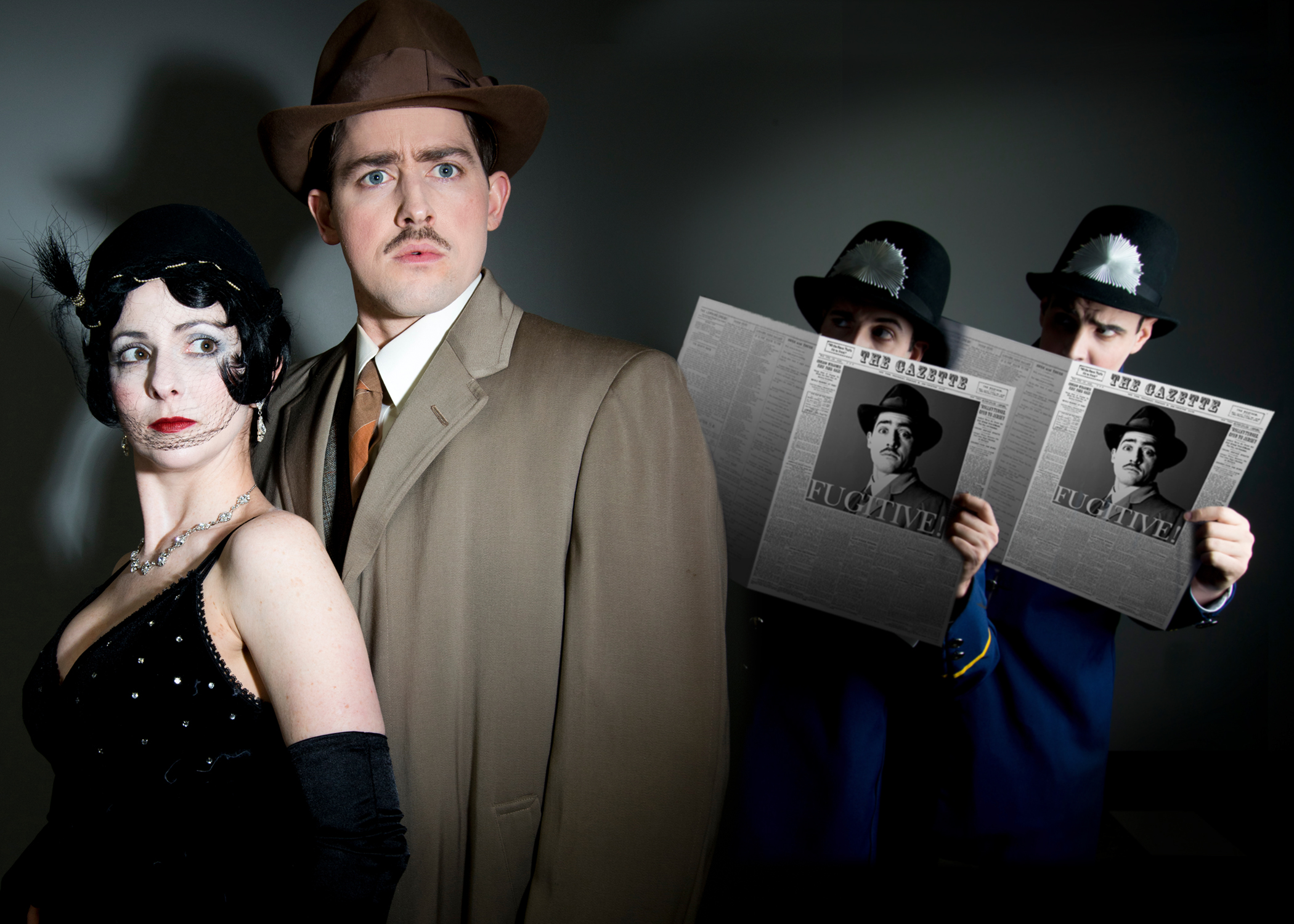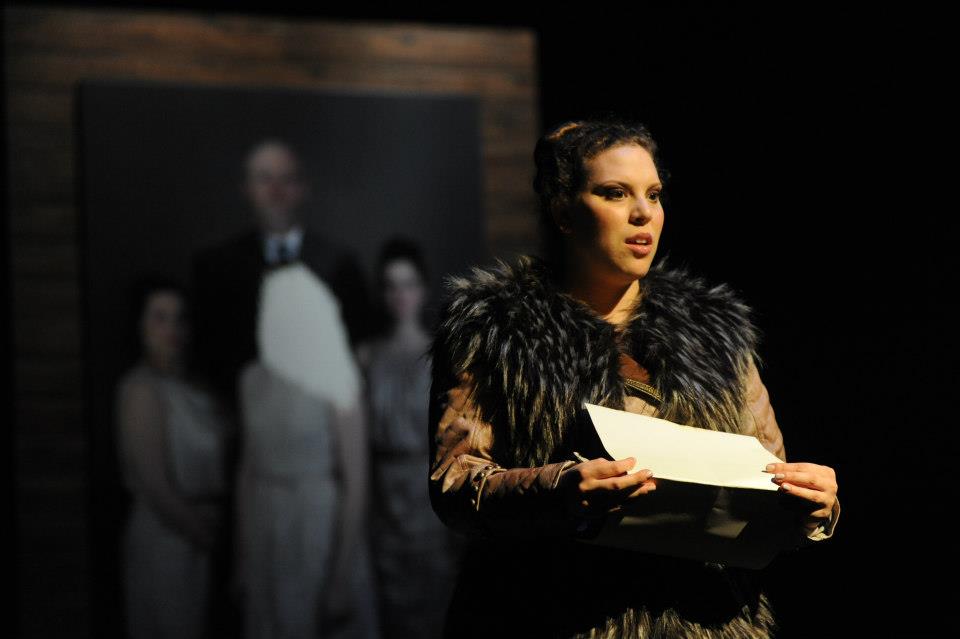“Men are so necessarily mad, that not to be mad
would amount to another form of madness.”
~ Pascal, Pensées
There is one place, surely, that Hamlet does not belong—he, who, more than any other character in literature defines modern consciousness and consciences, and from whose troubled lips and bare bodkin tongue issue more coarsely-witted words-words-words than nary a cock can crow at a russet mantle morn.
And that place is a madhouse.
So, then, let us put him there and see what happens!
Let us see if the Prince of Denmark, condemned to an asylum, can drive Ophelia sane. Let us see if the play within the play within the padded walls of Elsinore makes madness into method. Such is the daring spectacle that USC associate professor and director Robert Richmond has unveiled for audiences at USC 's Drayton Hall Theatre during the next two weeks (April 18-26), with the Theatre South Carolina season finale, Hamlet.
“You can do Hamlet in ruffles and codpieces, and in the right place, at the right time, it’s exactly the right thing to do,” explains Richmond in pres material. “But—”
The former associate artistic director of the Aquila Theatre Company, who for the third time is venturing as director to the rotten kingdom of Denmark, need not say more. Michel Foucault wrote in Madness and Civilization: “On all sides, madness fascinates man.” And that, theatergoers, is reason enough.
Reason enough to trade Elizabethan collars for head cages, doublets for straightjackets, Claudius’ throne for a wooden wheelchair. Reason to transform the Globe Theatre stage into a fantastical sanitarium borne from the imagination of Terry Gilliam and Dante’s Inferno, complete with googly-eyed sock puppets and slide whistles. Reason to fashion costumes that impossibly join the worlds of Mad Max and Foyle’s War (applause for MFA student costume designer April Andrew), plus soundscapes that magically transport audience members into an eerie Myst-like wonderland (kudos to sound designer Britt Sandusky).
Reason enough to cackle. To roil. To twitch. To gambol in a clown nose. Perchance to drool.
For four centuries, scholars and critics, actors and audiences, have toyed with Hamlet’s feigned madness—when all this time Shakespeare and other formidable authors like Joseph Heller (Catch-22) and Ken Kesey (One Flew Over the Cuckoo’s Nest) have simply been trying to tell us that while the world might be a stage, it’s also a nuts as knickers loony bin. Despite civilization’s best efforts to segregate the sane from the insane, the outside world is itself one great big round Marat/Sade.
Throughout the profound experimental success of Richmond’s Hamlet, one is confronted with narrative dilemmas—which are intriguing even when they hit dead ends. In a ruffle and codpiece Hamlet, all characters have readily-identified roles with respect to Claudius and Gertrude’s court. But in an asylum Elsinore, the characters have fresh designations as either staff members or inmates.
I applaud Richmond’s choices. Nearly every player is a detainee. The few exceptions include Polonius, who, while traditionally played as a babbling pedant, here loosely is crowned warden of the nuthouse, Keeper of the Keys in bloodstained scrubs, and is played with Stanley-Tucci-Devil-Wears-Prada-butchery deft by second year MFA student Trey Hobbs. Also, Horatio, played with staccato objectivity by second year MFA student Kate Dzvnonik, is a photojournalist of sorts granted unrestricted access to the Elsinore grounds. Horatio’s camera is present throughout much of the production, recording all, occasionally changing hands, eventually finding Horatio again.
The two other staff members—perhaps it’s better to label them as malleable bureaucrats—are the under-the-radar characters Rosencrantz and Guildenstern, who ultimately inherit Polonius’ key ring following his dinner date with the worms at the hand of Hamlet. Once R&G exeunt for good, so do the madhouse keys, and with them all hope for Elsinore’s deranged population. (I could write an essay just on that keychain.)
The experimental nature of Richmond’s production—which excels on every technical level (and for which assistant technical director Christine Jacky and Theatre SC Artistic Director Jim Hunter deserve umpteen accolades)—forces interesting re-readings. For instance, Claudius might be King of Denmark, but he is no less an inmate than McMurphy in One Flew Over the Cuckoo’s Nest. Yet in sanitarium Hamlet, Claudius is freed from his normal role as an immobile agent of fratricide, and stalks the stage as a ferocious tattooed sociopath, played expertly and with Hannibal Lecter energy by guest artist and Royal Academy of Dramatic Art-trained actor Richard Sheridan Willis.
On the other side of the re-reading spectrum, the character of Ophelia has less definition in unhinged Hamlet. Though played masterfully by second year MFA student Laurie Roberts in full spectrum mania descent, from mop bucket shampoos to sock puppet solos, Ophelia’s familial connection to the warden Polonius (and this goes for Laertes too) as well as her romantic association with Hamlet are somewhat difficult to map.
Even the audience itself has a renewed role. While Horatio’s camera might serve as a metaphorical Panopticon (defined as a circular prison with cells arranged around a central well, from which prisoners could at all times be observed), it is the individual in the seat who truly serves as Denmark’s omnipresent surveillor, free to judge all players as well as Hamlet’s stability. This makes for intriguing penetrations of the fourth wall, as each soliloquy can be interpreted as a character staring into the inviolable lens of a security camera and communicating one-way with an unseen master.
(As an aside—and be honest, you want to know—I was disappointed in the obvious quality of Hamlet’s famous “to be or not to be” speech, as played to the Panopticon, but was mesmerized by the “what a piece of work is man” monologue, played roughly in the same manner. Another interesting turn of the experiment.)
And, finally, we come to the title character. Second year MFA student James Costello is the most talented USC student actor I have seen since Demetrios Troy. One has few opportunities to play Hamlet, but you would have to look to James Earl Jones’ King Lear or Ralph Fiennes’ Coriolanus to find an actor pour more energy and intent into a role. Costello’s Prince of Denmark, more Mel Gibson than Kenneth Branagh, also is reminiscent of Brad Pitt’s Jeffrey Goines in Twelve Monkeys: one minute lucid, then instantly flipping to apoplectic possession at the hands of the Scarecrow-Sock Monkey Ghost. Whether comically turning a book into a flying birdie or grappling in blood sport chains with Laertes, Costello has complete control of the Panopticon—the mark of any successful Hamlet, and well worth the price of admission itself.
Well, almost finally. I want to give a lexical standing ovation to every member of the Theater SC technical crew who helped turn the stage itself into a memorable character. From the human cage vents to the trap door maws, not since The Muppet Show has a stage been so anthropomorphic. Elsinore herself lives and breathes. Achtung!
Director Richmond’s Hamlet is a superlative example of educational theater and in my opinion is the first absolute-must-see production in Columbia since he directed Elephant’s Graveyard at Trustus Theatre. Every flaw is forgivable and quickly forgotten—even the exclusion of the minor character Fortinbras, who to my mind is as structurally critical to Hamlet as Hecate is to Macbeth. Alas.
I have never seen a Shakespeare production that so consciously reminds me that all of its voices originated in one single human mind. My ultimate reading of Richmond’s experiment is that Hamlet, in the right light, exposes the mad, mad, mad, mad, sane mind of one William Shakespeare.
As Harold Bloom once wrote, “All that matters is Hamlet’s consciousness of his own consciousness, infinite, unlimited, and at war with itself.”
What a piece of work is a man! The paragon of animals!
Yet, also: A beast. No more.
~ Arik Bjorn
Hamlet at USC's Drayton Hall Theatre runs April 18-26. Show times are as follows: Friday, April 18: 8 pm; Saturday, April 19: 7 pm; Wednesday-Friday, April 23-25: 8 pm; Saturday, April 26: 7 pm and 11 pm (half-price for late night performance). There is no performance on Sunday, April 20 because of the Easter holiday.
Tickets are $18 for general public, $16 for USC faculty/staff, military and seniors 60+, and $12 for students. USC Drayton Hall Theatre is located at 1214 College Street on the USC-Columbus campus (on College Street between Sumter and Greene Streets). Call 803.777.2551 for more information or to reserve tickets.
To read more, visit: http://artsandsciences.sc.edu/thea/2014/hamlet.html

















